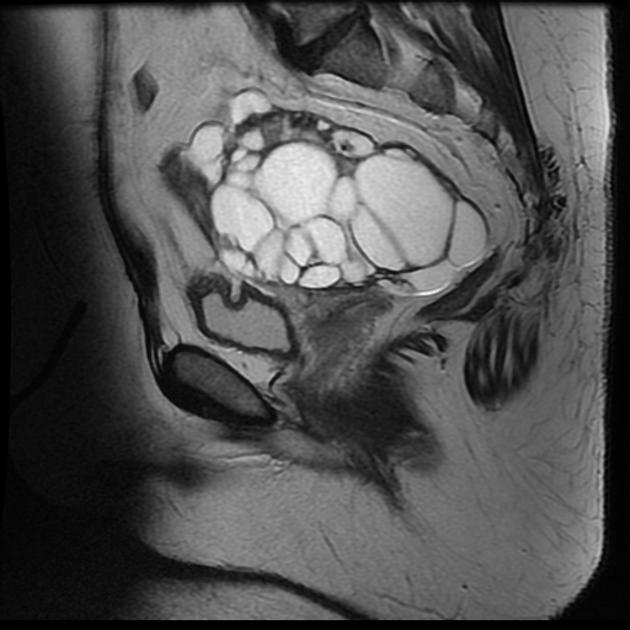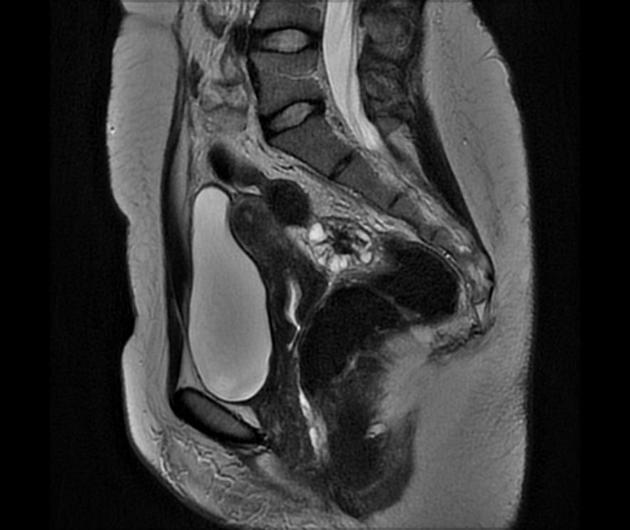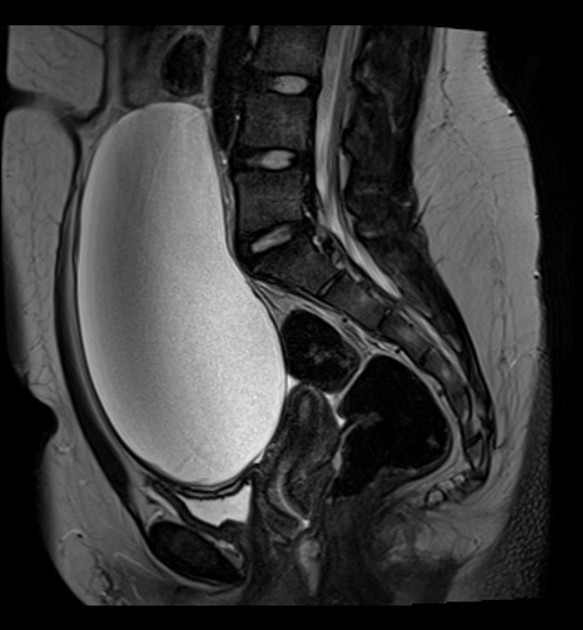ovarian cystadenofibroma







Ovarian cystadenofibromas are a relatively uncommon benign epithelial ovarian tumor where the fibrous stroma remains a dominant component of the neoplasm. As a group, they are thought to represent ~1.7 % of all benign ovarian tumors .
Pathology
Lesions can be bilateral in ~15% of cases. Although generally classified as an epithelial tumor, a cystadenofibroma contains both epithelial and stromal components.
Recognized histological subtypes include :
- serous cystadenofibroma of the ovary
- mucinous cystadenofibroma of the ovary
- endometrioid cystadenofibroma of the ovary
- clear cell cystadenofibroma of the ovary
- mixed cystadenofibroma of the ovary
Radiographic features
Ultrasound
Almost all cystadenofibromas are predominantly cystic on ultrasound with septations seen in ~30% of cases. Papillary projections or solid nodules have been sonographically seen in just over 50% of cases. Vascularization can be present in just under 50% of cases with a typical pattern of peripheral vascularization with scattered vessels of high blood flow impedance .
MRI
They can have either a pure cystic or complex cystic pattern with the solid components having a nodular or trabecular pattern .
Signal characteristics
- T2: due to the stromal components the fibrous septa often have low signal while the cystic components can have high signal; this may give a "black sponge" like appearance
- T1 C+ (Gd): septated component may show moderate enhancement
Treatment and prognosis
They generally tend to be benign tumors although the degree of epithelial proliferation and its relation to the stromal component of the tumor can be used for their classification as benign, borderline or malignant .
See also
- paraovarian cystadenofibroma
- ovarian serous tumors
Siehe auch:
und weiter:

 Assoziationen und Differentialdiagnosen zu ovarian cystadenofibroma:
Assoziationen und Differentialdiagnosen zu ovarian cystadenofibroma:
